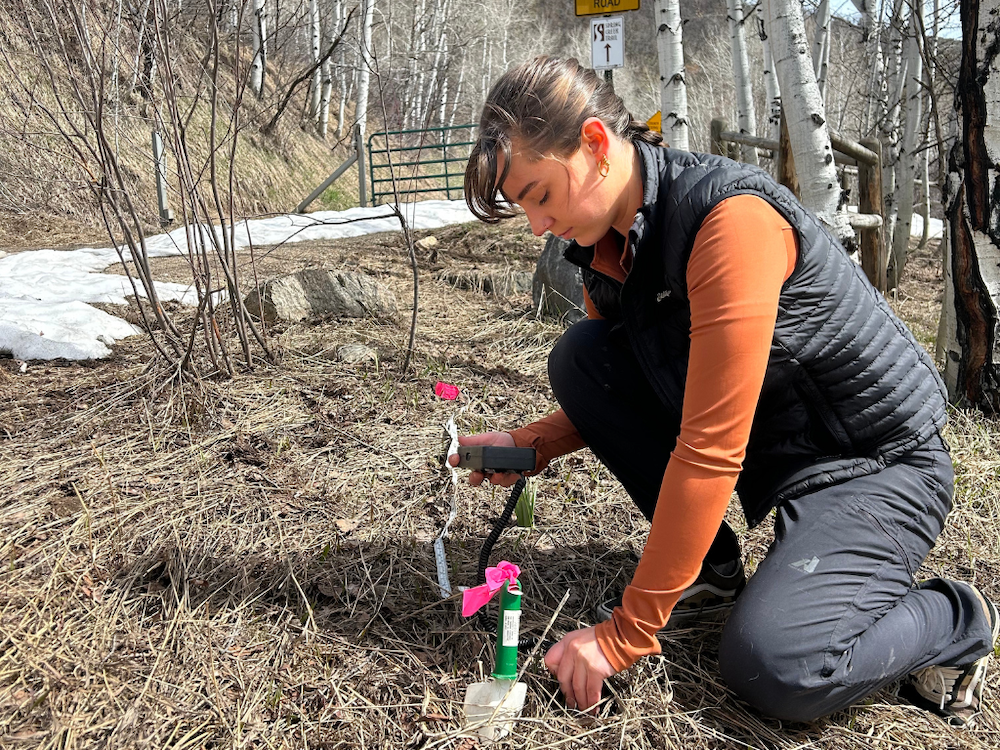APRIL 3, 2017 BY
Written by Suzie Romig, YVSC
An engaged and inquisitive crowd attended the recent Yampa Valley Sustainability Council Talking Green program on anaerobic digestion to learn how organic waste can be turned into energy and fuel on a variety of levels ranging from do-it-yourself projects to industrial scale equipment that could transform consumer waste at a large ski area.
Audience members learned that anaerobic digestion can be as simple as the process of composting, which people can do at home to turn waste into fertile soil. The difference is that composting involves aerobic digestion or using oxygen in the process, while anaerobic digestion is a process where microorganisms break down biodegradable materials in the absence of oxygen to manage waste or to produce fuels.
Alex King, an intern at Innovative Ag Colorado in Steamboat Springs, brought along his build-your-own anaerobic digester made from a model found on the open resource website. King said his eventual goal is to use home food waste that will basically ferment into fuel within his closed container to produce enough methane to replace some of the propane used to power his backyard grill.
“This is a great technique because it’s simple and is very accessible to anyone,” said King, a Steamboat Springs native.
Mark Berkley, owner of Innovative Ag, purchased a family-scale anaerobic digester for about $1,000 from the company Homebiogas. The user-friendly product is shipped as a to-be-assembled kit that turns into a 3-by-5-foot unit that converts organic waste into gas for cooking or to power a small home generator for up to three hours. Other bi-products include liquid fertilizer and compost.
“There is a ton of potential; the possibilities are limitless,” Berkley said. “What is really cool is nobody can monopolize this fuel source. It’s right in your backyard power-stopping your home. Using anaerobic digestion is completely open to anybody.”
Busy associate professor Sybil Sharvelle, who teaches in the Department of Civil and Environmental Engineering at Colorado State University, spoke to the Talking Green audience via video call to explain the larger scale uses in the region for the renewable resource of biogas, which is the mixture of gases coming from the breakdown of organic matter during anaerobic digestion. The waste can include manure, plant material, yard waste, municipal sewage waste or food that all be turned into methane gas, compost and liquid fertilizer. The renewable biogas can be used to produce electricity or vehicle fuel, can power boilers for heat or can be purified to add to a natural gas supply line.
The professor said biogas methane is a high-energy production fuel source that also creates less carbon dioxide emissions than production of other vehicles fuels such as diesel or gasoline. The process also keeps potent methane out of the atmosphere as methane contributes to ground level ozone and holds much more heat in the atmosphere than carbon dioxide.
At New Belgium Brewing in Fort Collins, for example, a successful anaerobic digestion system turns liquid waste water into electricity. In Grand Junction, the waste methane that previously was flared and burned from an anaerobic digestion wastewater facility is now converted to biodiesel to fuel buses, trash trucks and other vehicles. In Yolo, Calif., biogas is captured at a cost-effective landfill anaerobic digester and converted into electricity.
In response to an audience member question, the professor explained that animal manure intended for anaerobic digestion works best when water is present such as at a dairy cattle operation where manure is hosed off a concrete slab but is not as easy with dry manure cattle operations.
The third Talking Green speaker Brendan McCrann is founder of the company Future Pointe based in Loveland that has worked toward community scale solutions for food waste since 2009. McCrann said his team observed a big gap in progress in anaerobic technology in North America compared to overseas solutions. Starting in 2016, his company partnered with a clean tech manufacturing company in the United Kingdom to develop a modular and scalable solution using 20-foot to 40-foot shipping container anaerobic digesters. Those units can process between a half ton and 5 tons of material per day to generate on-site distributed power for such uses as electricity, heat and refrigeration. He said that digester product line should be rolled out in the U.S. this summer.
Professor Sharvelle noted that in the cold winters in the mountain regions, anaerobic digestion does need to take place in a heated location as the process works best at approximate body temperature or at 97 degrees. With larger systems, however, some of the energy produced in anaerobic digestion can be used as heat for the unit. She said conceptually, restaurant food waste and other organic waste could be collected in a co-op format in Routt County and converted to heat a large facility or to fuel fleet vehicles.






